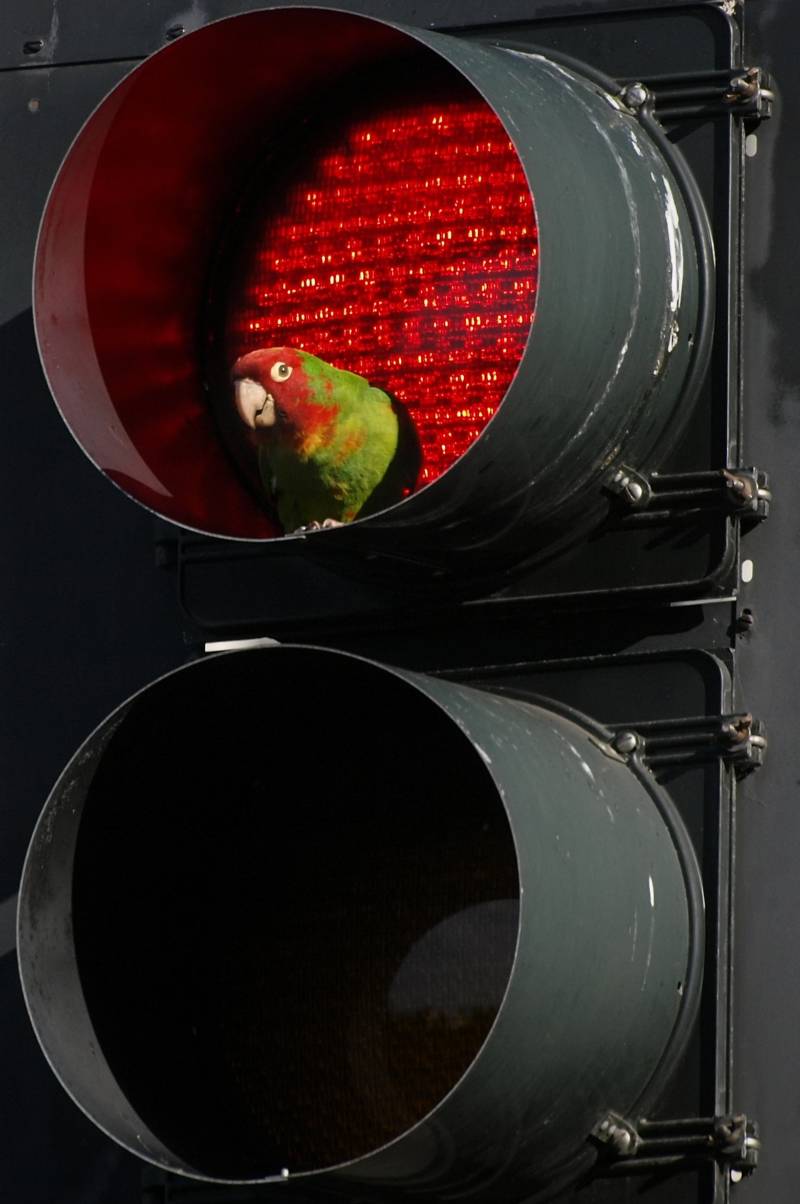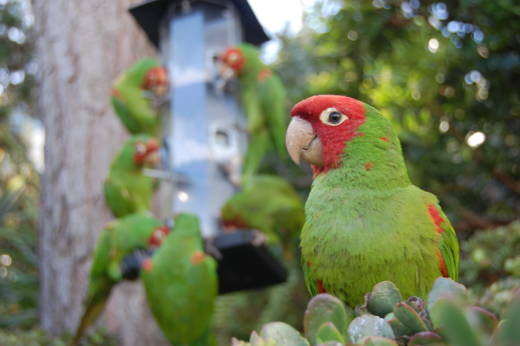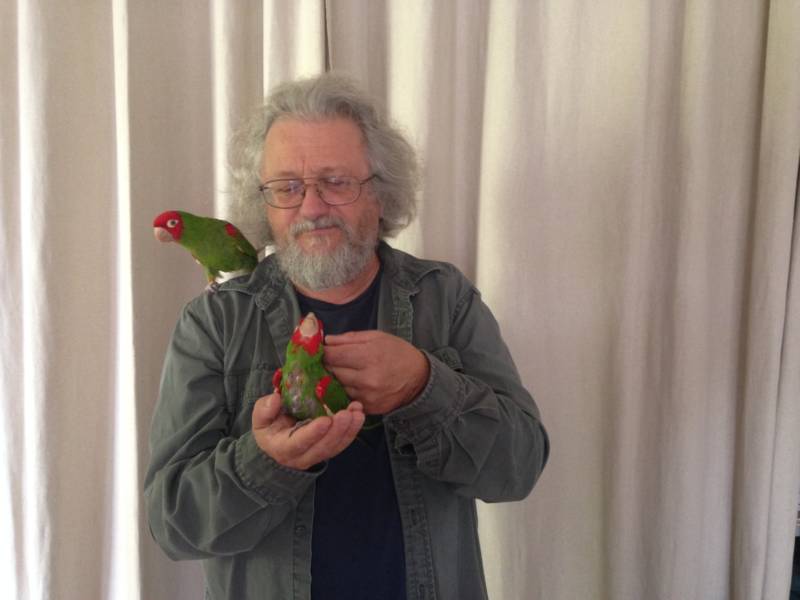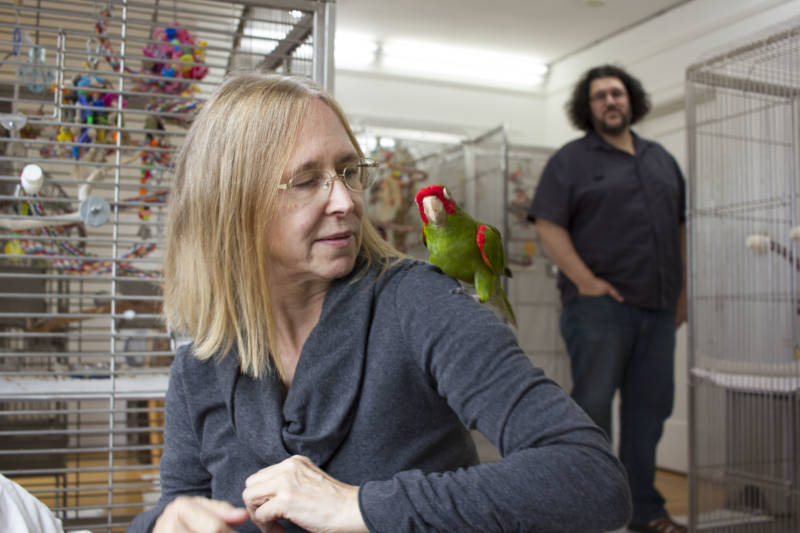The busy streets of San Francisco seem like the last place you’d find wild parrots. And yet, there they are. How’d they get here? Bay Curious is a new podcast from KQED that’s all about answering your questions about the Bay Area. Find us on iTunes, Google Play or NPR One.
This week on the podcast, we answer listener Colleen McClowry’s question:
“Where did all of the parrots of San Francisco come from? I think they’re probably not native to the city. I’m interested to know how they got there.”
What Are They?
The wild parrots in and around San Francisco are called cherry-headed conures. At one point, a mitred conure joined the flock and bred with the cherry heads. Now the flock is dotted with hybrids. There are a couple ways to differentiate the breeds. Cherry heads have slightly smaller bodies and a red helmet pattern on their heads, whereas mitred conures have a more blotchy pattern of red and feet that are a slightly darker hue.

Where Are They From?
The cherry-headed conures come from a small territory spanning Ecuador and Peru. The mitred conures originated from a large territory ranging from Peru through Bolivia down to northern Argentina.
How Did They Get Here?
They were brought here to be sold as pets in the exotic pet trade. The U.S. was the largest importer of birds in the world before the government banned the trade of wild exotic birds in 1992.
How Did They Get Out?
The founders of the wild flock of conures either escaped or were released.



